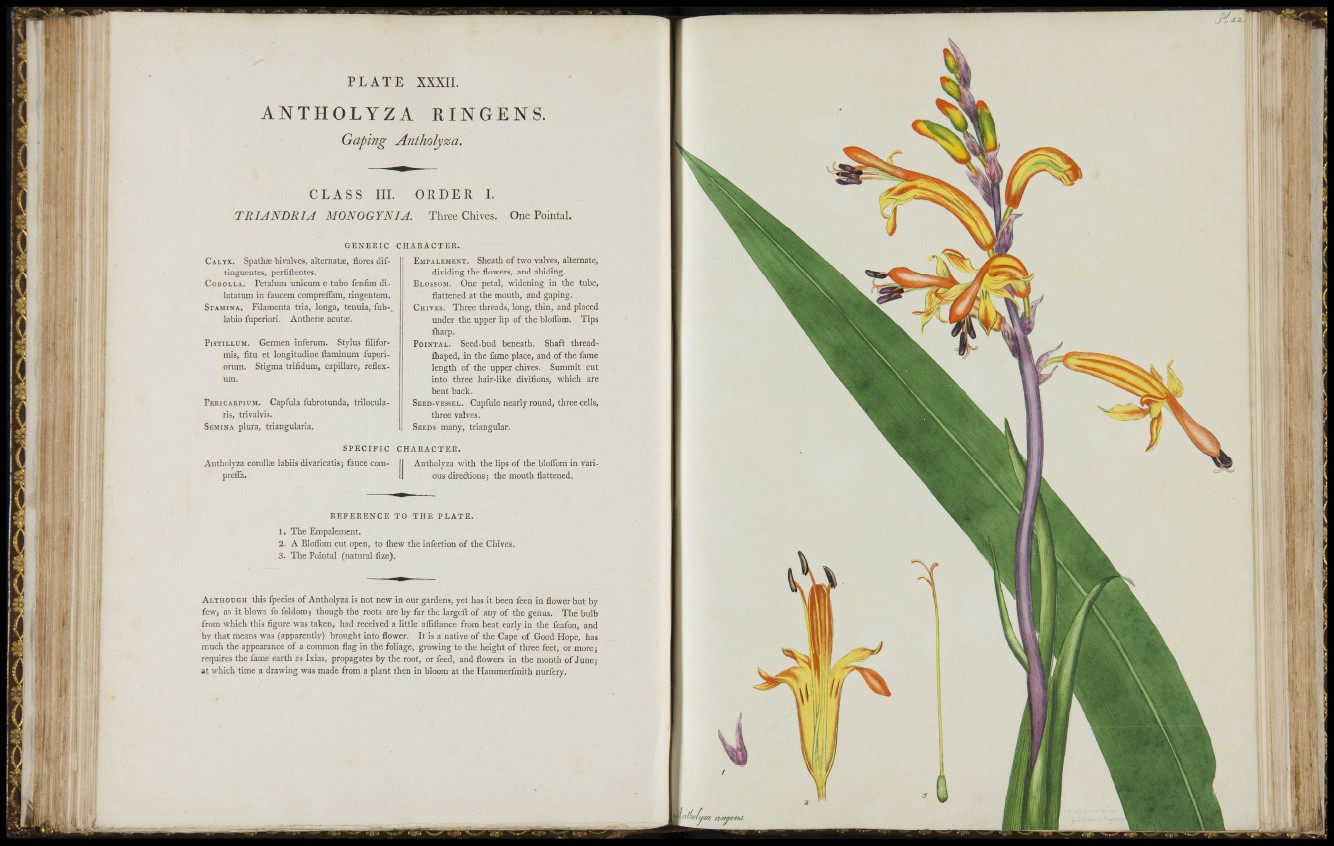
5 I
'W
tibi
--rt
•• !
•11
• : iît
; 1
P L A T E XXXII.
A N T H O L Y Z A RINGENS.
Gap'mg Aniholyza.
CLASS m. ORDER L
TRIANDRIA MONOGYNIA. Three Chives. One Pomtal.
GENERIC CHARACTER.
CALYX. Spathse bivalves, alternatae, flores diftinguentes,
periiftentes.
COROLLA. Tetalum unicum e tubo fenfim dilatatum
in laucem compreflam, ringentem.
STAMINA. Filamenta tria, longa, tenuia, fub-,
labio fuperiori. Antherae acutee.
PisTiLLUM. G^ermen inferum. Stylus filiformis,
litu et longitudine ftaminum fuperiorura.
Stigma trifidum, capillare, reflex-
P E R I C A K P I U M. Capfula fubrotunda, trilocularis,
trivalvis.
SEMINA plura, triaugularia.
EMPALEMENT. Sheath of two valves, alternate,
dividing the flowers, and abiding.
BLOSSOM. One petal, widening in the tube,
flattened at the mouth, and gaping.
CHIVES. Three tlireads, long, thin, and placed
under the upper lip of the bloffora. Tips
fliarp.
PoiNTAL. Seed-bud beneath. Shaft threadfliaped,
in the fame place, and of the fame
length of the upper chives. Summit cut
into three hair-like divifions, which are
bent back.
SEED-VESSEL. Capfule nearly round, three cells,
three valves.
SEEDS many, triangular.
Antholyza corollee labiis divaricatis; fauce compreflTa.
SPECIFIC CHARACTER.
Antholyza with the lips of the bloflbm in various
direftions; the mouth flattened.
REFERENCE TO THE PLATE.
1. The Empalement.
2. A Bloflim cut open, to fliew the infertion of the Chives.
3. The Pointal (natural iize).
A L T H O U G H this fpecies of Antholyza is not new in our gardens, yet has it been feen in flower but by
few, as it blows fo feldom; though the roots are by far the largeft of any of the genus. The bulb
from which this figure was taken, had received a little affiftance from heat early in the feafon, and
by that means was (apparently) brought into flower. It is a native of the Cape of Good Hope, has
much the appearance of a common flag in the foliage, growing to the height of three feet, or morej
requires the fame earth as Ixias, propagates by the root, or feed, and flowers in the month of June;
at which time a drawing was made from a plant then in bloom at the Hammerfmith nurfery.
^nliwfij-az l'/Mçtf/itJ.